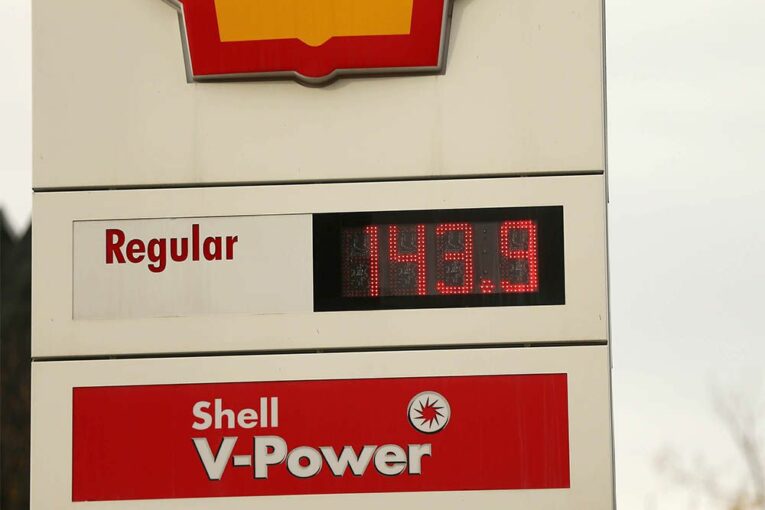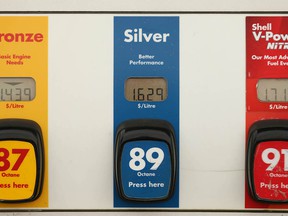
A summer surge in global energy markets continued Tuesday, with benchmark U.S. natural gas prices hitting a 12-year high, while oil chugged toward US$80 a barrel, its highest point since 2014.
For Canada’s battle-tested oil and gas industry, which has weathered a prolonged period of weak prices, investor apathy and decarbonization issues, both key commodities are soaring at the same time.
However, rising energy prices have ignited concerns about the broader implications for consumers, inflation and the economic recovery.
“Remember, we’ve been in a tough place for seven years,” Birchcliff Energy CEO Jeff Tonken said in an interview Tuesday.
“From a Birchcliff perspective, we are thrilled with where these prices are. But you have to wonder how high will they go and what will that do to our economy? That’s the concern.”
Both oil and natural gas markets have been on a run recently as global energy demand and economic activity have rebounded from the lows seen earlier in the pandemic.
A looming energy crisis in Europe, where natural gas prices are spiking, and higher demand for liquefied natural gas in Asia are bolstering the outlook for petroleum producers. However, it leaves consumers facing the prospect of higher prices this winter to fuel their vehicles and heat their homes and businesses.
“The sentiment in the industry is positive, but they also know it’s not the gangbuster investor mentality that we had a decade ago,” said Martin King, senior analyst at RBN Energy in Calgary.
“For consumers, at the end of the day, it means a higher price tab.”
Oil prices have increased 27 per cent since mid-August, with benchmark West Texas Intermediate (WTI) crude closing Tuesday at $78.93 a barrel, up $1.31 on the day.
The increase came after OPEC+ members met Monday and agreed to not crank up output beyond previously announced increases of 400,000 barrels of oil per day for November.
News that OPEC and its partners will keep a cap on production guarantees a tight supply picture during the final two months of the year, said Louise Dickson, Rystad Energy’s senior oil market analyst.
Meanwhile, natural gas markets are heating up, driven in part by concerns about low inventory levels in Europe. In the United States, gas futures climbed nearly 10 per cent, or 55 cents, to close at $6.31 per million British thermal units (mmBTU) on Tuesday.
In Alberta, spot prices for AECO natural gas shot up 47 cents to C$5.28 per gigajoule.
“This is not a spike just because of a near-term cold snap,” said analyst Jeremy McCrea of Raymond James.
“It could get very costly here for a lot of people . . . there’s a Goldilocks price and it looks like we’ve surpassed it.”

A report released Tuesday by TD Economics said a global energy supply squeeze has amplified the effect of increasing natural gas prices, spilling over into other commodities.
Bank economist Omar Abdelrahman noted European benchmark natural gas prices have climbed by more than 500 per cent this year, including 100 per cent during the past month.
“Against this tightening global backdrop, North American economies have started to feel the pinch,” he wrote, adding Canada and the U.S. face fewer supply risks because of ample domestic production capacity.
That’s of some comfort to consumers heading into winter, but it appears higher prices are on the horizon. And the typical response to rising prices — more spending and production — isn’t happening.
A new report by Deloitte Canada points out that spending discipline by producers is holding, as companies stay focused on maximizing cash flow, not ratcheting up output.
Deloitte forecasts WTI oil prices will average $65 a barrel in 2022. It also expects strong gas markets next year, with AECO averaging $4 per thousand cubic feet, compared to $1.86 two years ago.
“A lot of capital was not spent in the past 18 months,” said Andrew Botterill, Deloitte Canada’s national oil and gas leader.
“There’s a lot of focus and prudence from oil producers to spend capital carefully and maintain cash reserves, which means we’re not running out to drill on these high prices right now.”
For Canadian producers, stronger commodity prices are creating a gusher of increased cash flow.
Tonken said Birchcliff would need to see commodity prices stay high for 24 months before it would consider spending a lot more capital. It will instead focus on strengthening its balance sheet.
“We are going to pay our debt down to zero, probably by the end of next year,” he said.
“People are so negative against energy, we think that having no debt just takes away all of the risks of our business and then it’s a question of what we do with the free cash flow.”
Despite the general caution across the industry, there are signs drilling is picking up, which is needed to maintain production or increase it modestly.
On Monday, 164 rigs were drilling for oil and gas in the country, compared to 78 during the same period last year, according to the Canadian Association of Energy Contractors (CAOEC).
With higher commodity prices, the rebound in drilling is now exceeding pre-pandemic levels, said association CEO Mark Scholz.
Oilfield services companies are becoming busier, although several factors are preventing the industry from getting additional rigs out into the field, including labour shortages, the effect of COVID-19 and supply chain constraints.
Heading into the typically busy winter drilling season, activity levels are “going to go higher — the question is how much higher can it get?” Scholz asked.
“Service companies are under a lot of pressure right now to deliver on this demand. The challenge is that it’s not going to be easy.”
Chris Varcoe is a Calgary Herald columnist.
You can read more of the news on source
